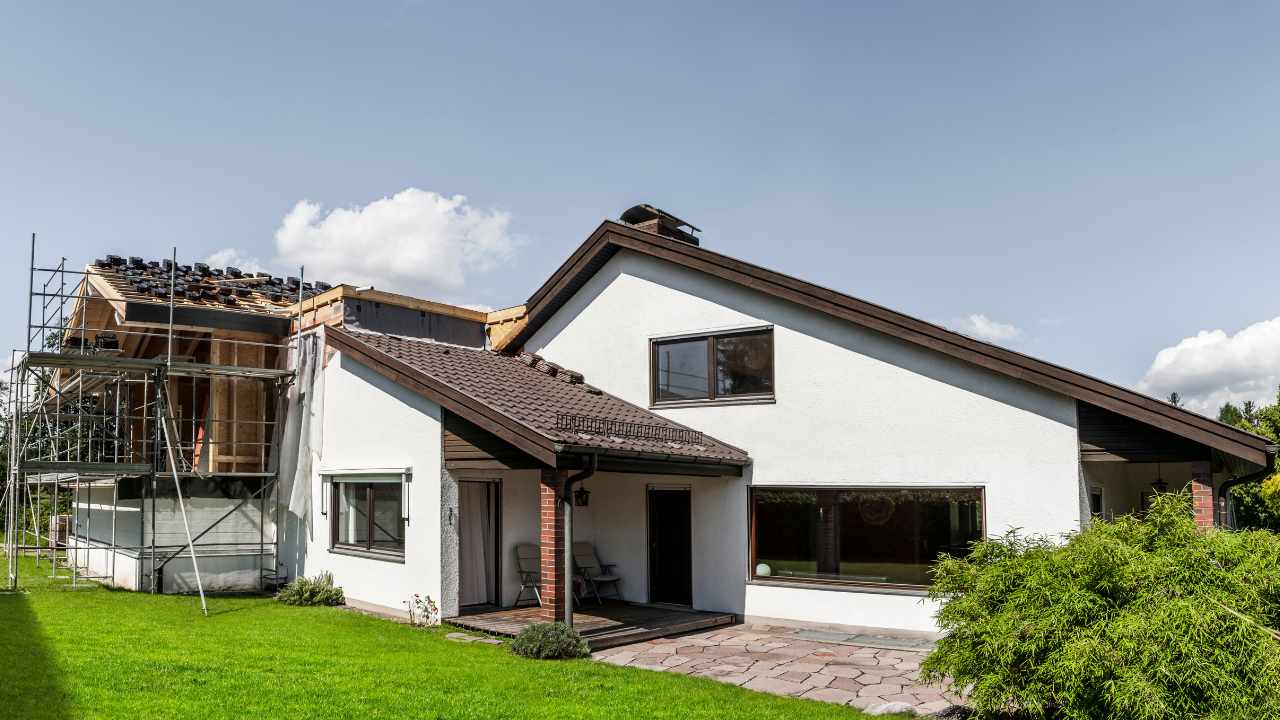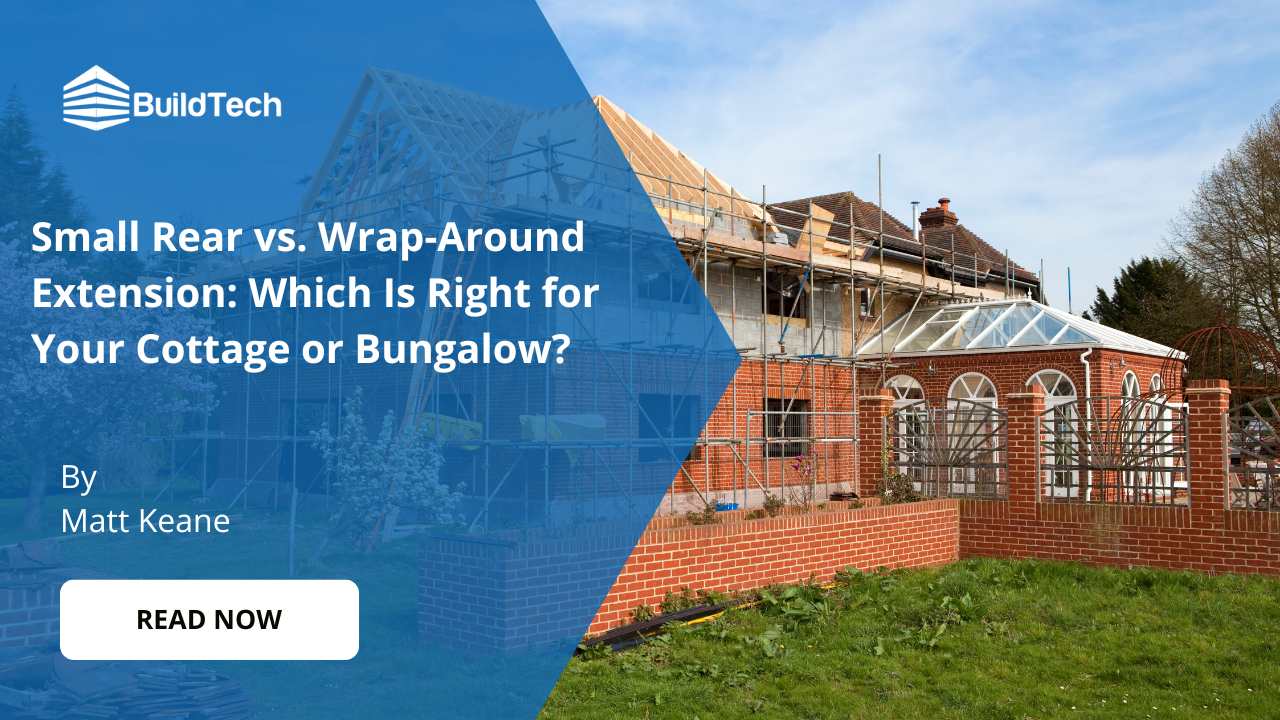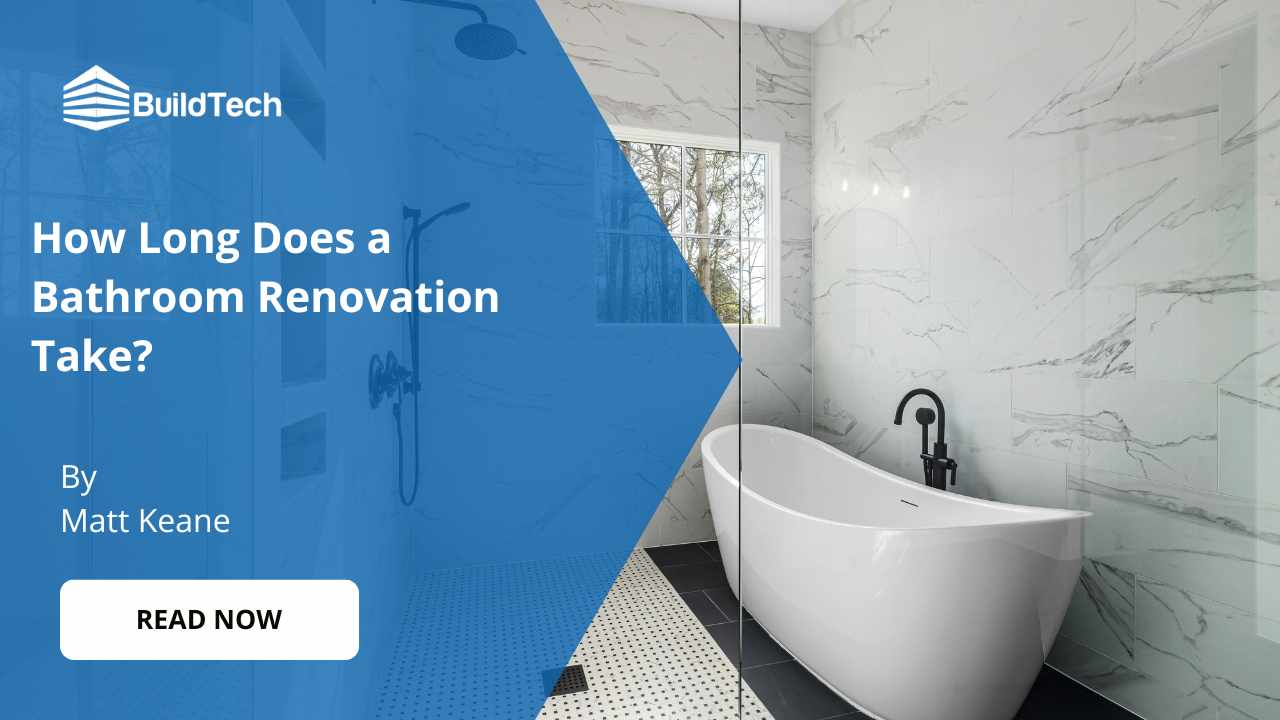Which is best between a small rear or wrap-around extension? Choosing the right type of home extension can be challenging, as each option offers unique benefits, costs, and design possibilities.
A small rear extension can provide a practical, budget-friendly way to add valuable living space, while a wrap-around extension delivers maximum floor area and creative layout options. Your choice will depend on factors like available outdoor space, planning requirements, and how you want your home to function.
In this guide, we'll explore small rear vs. wrap-around extension: which is right for your cottage or bungalow, their advantages and how you can make the best decision for your property.
Let’s start!
What Is a Rear Extension?
A rear extension is a home improvement that expands your property outwards into the garden, creating additional space for living, dining, or entertaining. It’s an ideal choice for houses with a generous outdoor area, allowing you to design larger, more open layouts that suit your lifestyle.
This type of extension can be customised to blend seamlessly with your existing home, using materials and finishes that match your budget and vision. For those deciding which is best between a small rear or wrap-around extension, understanding the benefits of a rear extension can help guide the choice.
A well-planned rear extension can transform your home, improving both its practicality and aesthetic appeal, while adding long-term value.
Layout Improvements

One of the biggest advantages of a rear extension is the ability to completely refresh your ground floor layout. Whether it’s moving your kitchen to overlook the garden, adding wide bi-fold doors for more light, or creating a spacious dining area, this change increases how you use and enjoy your home. The result is a smoother flow and a more inviting living space.
Planning and Design Support
While smaller rear extensions can often be built under permitted development rights, larger designs may require formal planning consent. Professional support ensures the process runs smoothly from start to finish.
Experts can handle the necessary paperwork, liaise with local authorities, and keep the project on schedule while ensuring compliance with all regulations.
What Is a Wrap-Around Extension?
A wraparound extension combines both a rear and a side return extension, forming an L-shape that extends around the back and side of your home. This design creates a spacious, open-plan layout that can completely transform the ground floor.
It’s ideal for homeowners seeking maximum use of their property’s footprint while maintaining visual appeal and structural strength. For those asking which is best between a small rear or wrap-around extension, a wrap-around option offers the largest scope for redesign and expansion.
The main benefit of a wraparound extension is the significant increase in floor space, allowing for versatile layouts and multiple functional zones.
Maximising Ground Floor Space
This type of extension is perfect for those who want to expand their ground floor living area on a large scale. By combining the depth of a rear extension with the width of a side return, it allows for multiple zones such as a spacious kitchen, dining area, and lounge.
It also creates flexibility for modern lifestyles, whether that’s entertaining, working from home, or open-plan family living.
Challenges and Planning Requirements

Due to their size and structural impact, wrap-around extensions usually require full planning permission and may be subject to more detailed regulations.
Professional guidance ensures your design aligns with planning policies while meeting your needs. With the right support, you can understand permissions smoothly and bring your vision to life without unnecessary delays.
Small Rear vs. Wrap-Around Extension: Which Is Right for Your Cottage or Bungalow?
Adding an extension is one of the most effective ways to improve your living space without the stress and cost of moving. For cottages and bungalows, two of the most popular choices are small rear extensions and wrap-around extensions, each offering unique advantages depending on your needs and property layout.
A small rear extension is ideal if you want a practical, budget-friendly way to create extra space for a kitchen upgrade, dining area, or home office. It’s a straightforward solution that adds functionality without overwhelming the character of a cottage or bungalow.
A wrap-around extension, on the other hand, combines rear and side extensions to deliver maximum floor area. This option is perfect if you want to reconfigure your layout entirely, creating large open-plan kitchens, bright living areas, and modern social spaces.
Choosing between the two depends on factors like available outdoor space, planning requirements, and how you want your home to function. With expert guidance, both options can be designed to complement your property while adding long-term value and comfort.
Conclusion
Choosing which is right for your cottage or bungalow between a small rear or wrap-around extension, the right choice depends on your space, budget, and lifestyle needs. A small rear extension offers a cost-effective way to add practical, stylish living space, while a wrap-around extension maximises floor area and design possibilities. Both options can increase your home’s value and functionality when planned well.
At BuildTech, we provide expert guidance from concept to completion, ensuring your extension meets both your vision and all planning requirements. Contact us today to discuss your ideas and let our team help you create a beautiful, functional space that perfectly suits your home.


















